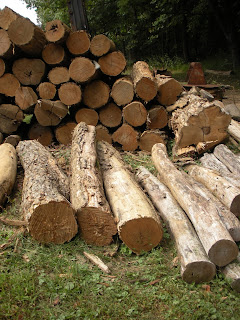 Gathering Firewood
Gathering FirewoodEvery time they had a spare moment in Sown in Dark Soil, my historical novel set in the Appalachians, the Moretz family cut firewood. That's because it was a never-ending task during earlier time periods. It took firewood to cook throughout the year, and, if you lived in a colder climate, it was imperative that you stock enough to get you through the winter.
Although city dwellers and people in more populated areas of the East often turned to burning coal around the turn of the century, those in the backcountry and mountain regions still usually burned wood. This continued well into the 20th century. And even afterwards, fireplaces became popular again for their aesthetic value and as a secondary heat source.
The process of gathering wood could be lengthy. First, the worker needed to fell the timber or find it already down. They then stripped off the limbs, using any large enough, and cut the trunk into workable lengths to transport. These logs were stacked onto a wagon or sled and taken home. Can you imagine the time needed to do this for each log in a load.
Back at the house, the logs would be cut into suitable pieces to fit into the fireplace or stove. The larger ones would also require splitting. Finally, the pieces would be stacked, preferably in a dry place, like the woodshed. However, it wasn't uncommon to also stack it behind the house or beside an outbuilding, especially in cold climates where the woodshed wouldn't hold enough.
If the timber had been fresh-cut, it would also need to season or dry first, because green pieces with their sap wouldn't burn well and left more residue. Hardwoods were used to prevent so much creosote buildup and because they didn't burn away as quickly. Most of us can be glad that we don't have to go through all of this anymore just to keep from freezing.
__________________________________________





No comments:
Post a Comment